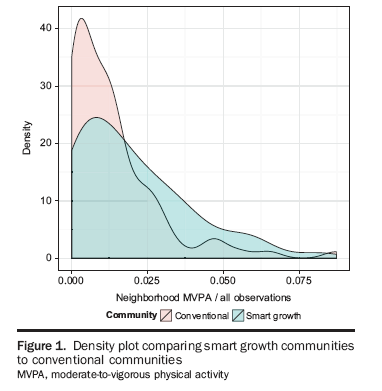A study published this month in the American Journal of Preventive Health finds that children who live in walkable places -- "smart growth neighborhoods," to use the authors' phrase -- get significantly more exercise than their peers who live in suburban environments designed for driving.

Researchers from UC Berkeley monitored the activity of 59 children living at The Preserve -- a planned community near Chino, California, designed to be more walkable than conventional subdivisions -- using GPS tracking monitors and accelerometers worn on the waist. They were compared to a control group of 88 kids from eight nearby "conventional" communities, with similar demographic and income characteristics. All the children were between ages 8 and 14.
The research team found that children living in the smart growth neighborhood got ten more minutes of physical activity per day than kids in the more sprawling communities. That translates to 46 percent more exercise for children in walkable communities.
"We were surprised by the size of the effect," lead author Michael Jerrett, Ph.D., professor in the School of Public Health at Berkeley, told Science Daily. "Ten minutes of extra activity a day may not sound like much, but it adds up."
The research team said developing smart growth communities and retrofitting existing neighborhoods for greater walkability could be key to helping kids get the recommended level of physical activity. The Centers for Disease Control recommend 60 minutes of daily aerobic activity for children. In America, only 42 percent of children ages 6 to 11 meet this threshold. Among children ages 12 to 19, only 8 percent get recommended levels.





